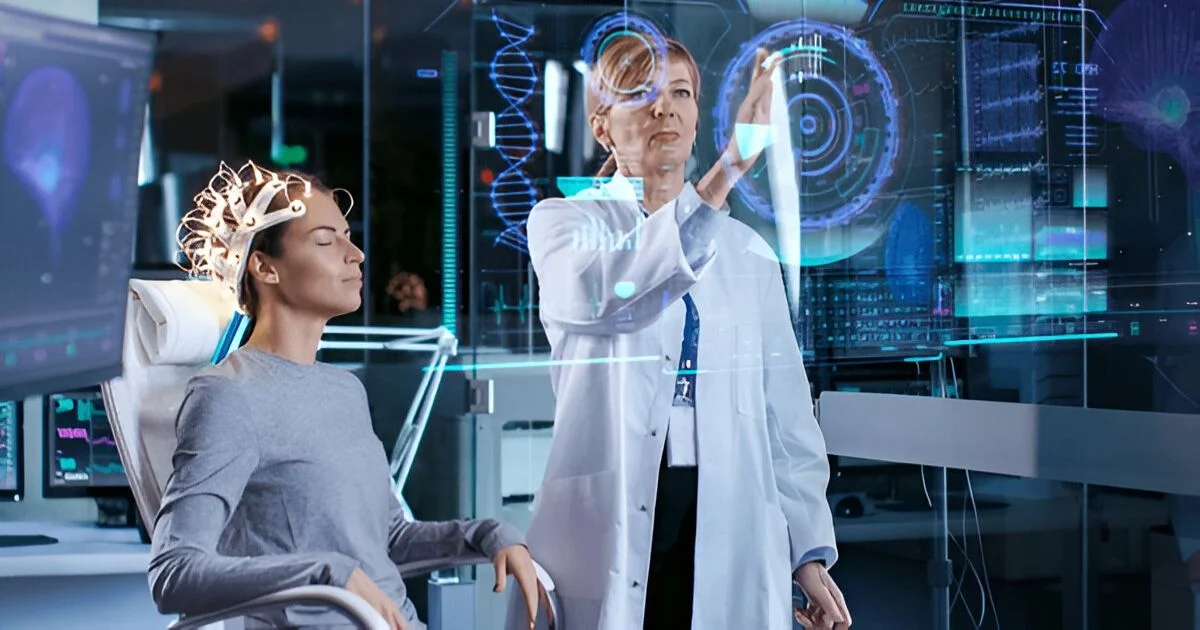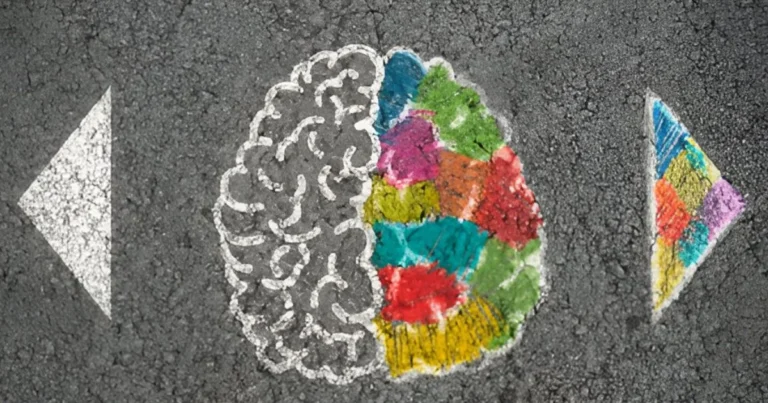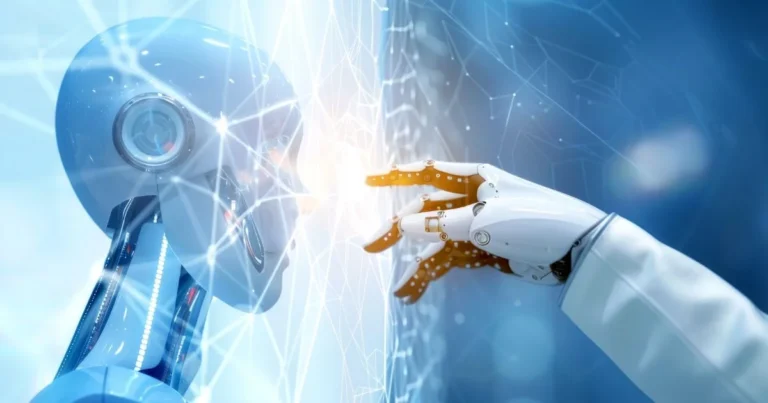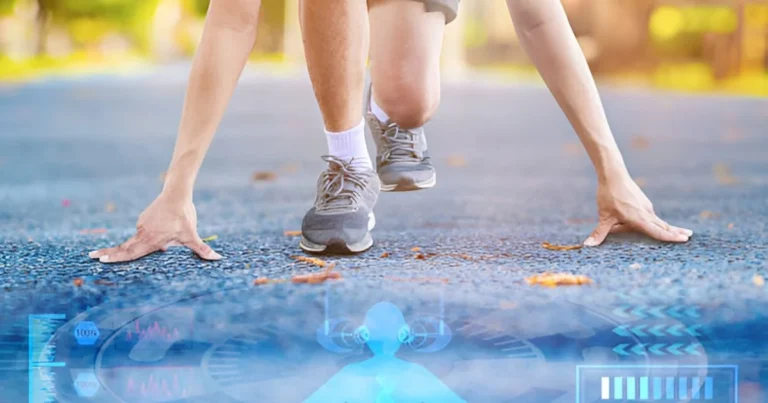Mindwriting: Giving voice to thought through neural interfaces
Every year, thousands of individuals lose the use of their limbs due to stroke, spinal cord injury, or neurodegenerative disease. When both speech and movement fall silent, communication becomes a matter of survival. This raises a central question: can brain activity be harnessed to restore a voice to those who have lost theirs? Brain-computer interfaces (BCIs) represent one of the most promising technological pathways in this field. These systems aim to establish a direct connection between the brain and a computer, translating intention into action without relying on muscles or speech. Once limited in performance, BCIs are now evolving at an unprecedented pace.
A major breakthrough came from a research team at Stanford University. For the first time, scientists developed a system capable of translating imagined handwriting, not physically written or mimed, but purely thought, into real-time text by a person with complete paralysis. Unlike traditional systems that move a cursor across a virtual keyboard, this new approach enables the brain to write directly, as if dictating its sentences to the machine.
This paradigm shift stems from a bold hypothesis: instead of decoding simple directional movements, researchers focused on the intricate process of handwriting, a familiar yet complex motor act that leaves a more distinctive and recognizable neural trace than elementary motions. By leveraging this complexity, the system achieved a text production speed that rivals smartphone typing. For individuals who have lost both speech and movement, this marks a true cognitive and technological revolution.
Published in Nature in 2021 by Willett and colleagues, this study doesn’t merely enhance BCI performance; it redefines their conceptual foundations. Previous high-end interfaces allowed users to select letters one by one using neural signals linked to eye movements or attempted gestures. This study took a different route: translating the mental script itself, the fine-grained temporal and spatial intention to handwrite.
The underlying premise is that complex gestures generate richer neural patterns than simple movements, activating more differentiated networks within the motor and premotor cortices. In other words, the more sophisticated the gesture, the clearer its imprint in the brain. The researchers succeeded in capturing this neural signature and converting it into text.
🔗 Read also: The silent language of the brain: Decoding what words cannot say
A language of neurons: How thought becomes letterform
The study centered around a quadriplegic patient known as T5, who was completely paralyzed following a spinal cord injury. He could neither move his limbs nor speak. However, T5 had learned to write by hand long before his accident, a crucial detail. Motor circuits associated with well-learned skills like handwriting can remain accessible in the brain, even in the absence of physical movement. It was these motor representations, stored in the cortex, that researchers aimed to decode.
To do so, two arrays of 96 microelectrodes each were surgically implanted into T5’s left premotor cortex, a brain region involved in planning and executing hand movements. These microelectrodes acted as sensors capable of recording the electrical activity of individual neurons. As T5 mentally attempted to write, letter by letter, without any visible motion, these neural signals were captured. The mere intention to form a letter generated a measurable pattern of brain activity.
To interpret these signals, the team designed a deep learning algorithm, a form of artificial intelligence modeled on the brain’s structure. They used recurrent neural networks, particularly suited for analyzing time-dependent data, such as unfolding sentences or sequential gestures. Each mentally written letter produced a distinct neural signature. By repeating each character multiple times, the researchers identified unique “neural fingerprints” for every letter of the alphabet. The algorithm then analyzed incoming signals in real time, assigning a probability to each neural pattern corresponding to a given letter. Once a confidence threshold was reached, the character appeared on screen. A language model, a statistical tool that considers likely grammatical structures and vocabulary, further corrected possible prediction errors.
The results were remarkable. T5 managed to generate up to 90 characters per minute, with a final error rate below 1% after linguistic correction. For comparison, the average smartphone user types about 115 characters per minute. Despite the complete absence of physical movement, mentally guided writing through neural activity closely approached typical typing speeds. This achievement demonstrates not only the persistence of motor patterns in the brain but also the feasibility of converting them into functional text for real-world communication.
🔗 Explore further: Beyond words: can we think without words?
The power of motor memory: Handwriting as a neural shortcut
The superiority of imagined handwriting, as revealed in this study, is not just a matter of speed, it lies in the very nature of the neural signals it produces. Unlike the simple, linear pointing motions often used in conventional BCIs, each handwritten letter represents a temporally and spatially structured motor sequence. Rather than posing a challenge, this complexity becomes an advantage: the more precisely organized the mental movement, the more distinguishable the accompanying neural activity becomes for decoding algorithms.
Analyzing electrophysiological signals from the premotor cortex, the researchers found that handwriting elicited especially rich neural configurations. These patterns didn’t just encode the final result, the letter itself, but also the mental “path” taken to trace it: the sequence of loops, directional shifts, and pauses. In other words, the brain doesn’t issue a static command, it generates a dynamic motor script, unfolding over time in a way that is unique to each character. This temporal layer adds valuable information, improving both the accuracy and speed of prediction models.
Another key factor highlighted by the study is the stability of the neural circuits involved in handwriting. Learned in childhood, handwriting becomes deeply embedded in the brain as overlearned motor routines, automatized sequences the brain can execute without conscious effort. These routines persist even after total paralysis, preserved as internal models ready for reactivation, independent of the body’s physical state.
Using a method called neural trajectory visualization, the team mapped how cortical activity evolved over time during imagined handwriting. These trajectories, represented in multidimensional mathematical space, revealed distinct paths for each letter. This means that the brain follows a unique internal “route” for every character, making it easier for a decoding system to differentiate them. For instance, the trajectory linked to an imagined “a” looks markedly different from that of an “e” or a “g,” not just in start and end points, but in its intermediate curves.
This level of fine-grained discrimination is not achievable with simpler mental gestures like moving a cursor or pressing a button. Such minimalist actions yield more uniform and less specific neural signals, which are harder to decode. In contrast, imagined handwriting offers a dense and nuanced neural alphabet, inherently encoded in the temporal dynamics of the gesture.
In this sense, choosing handwriting as the mode of communication isn’t just a practical or ergonomic decision, it is grounded in strong neuroscientific rationale. By leveraging the motor richness of a learned behavior, the Stanford interface simultaneously enhances decoding accuracy, speed, and robustness. This approach underscores the importance of designing interfaces around movements the brain already excels at producing.
🔗 Discover more: Neural biotypes: What MRI Can and Can’t reveal about mental disorders
Can we scale the mind-keyboard? Turning a breakthrough into reality
Despite its groundbreaking nature, this proof of concept was limited to a single participant. Further research will be needed to assess how well the approach generalizes to other patients, particularly those with locked-in syndrome, a condition where consciousness remains intact while nearly all voluntary movement is lost. In such extreme cases, access to a reliable communication interface becomes both a clinical and ethical imperative.
Another challenge stems from the device itself. The electrodes used in this study were intracortical, meaning they were implanted directly into brain tissue to record neural activity with high precision. While this method offers excellent resolution, it requires invasive surgery and carries risks such as infection, inflammation, and limited sensor durability. Over time, the brain’s immune response may degrade signal quality. To address this, researchers are exploring less invasive alternatives such as electrocorticography, which places electrodes on the brain’s surface rather than within it. Though slightly less precise, this technique offers a promising balance between performance and clinical safety.
Beyond surgical considerations, a major hurdle lies in the variability of neural signals. Unlike a microphone or camera, brain recordings are inherently unstable. Electrode position, internal states, and even fatigue can alter neural activity from day to day. To ensure reliable signal interpretation, each session begins with a brief recalibration phase, allowing the algorithm to adjust to signal fluctuations and re-learn the neural patterns of each letter.
The impact of this study goes beyond technological innovation. It reinforces a fundamental principle of neuroscience: learned action patterns remain encoded in the brain even when the body can no longer carry them out. Imagined handwriting does not reproduce the movement itself, it reactivates the neural networks associated with the act of writing. This persistent trace, known as cortical motor memory, is a valuable asset for neurotechnology. Communication, then, no longer depends on gesture, but on its cerebral imprint.
By enabling text production through brain activity alone, this interface opens new horizons for individuals deprived of speech. It offers access to written language with a fluidity and accuracy never before achieved in this domain. Beyond personal use, the technology could allow paralyzed individuals to write emails, keep journals, express themselves, or even return to intellectual or professional pursuits.
Once confined to the realm of speculative fiction, this possibility is now taking shape in real-world laboratories. While many technical, clinical, and ethical challenges remain, the results achieved so far mark a crucial milestone on the path toward direct brain-based communication, rooted in the preserved capabilities of the human brain.
Reference
Willett, F. R., Avansino, D. T., Hochberg, L. R., Henderson, J. M., & Shenoy, K. V. (2021). High-performance brain-to-text communication via handwriting. Nature, 593(7858), 249–254








